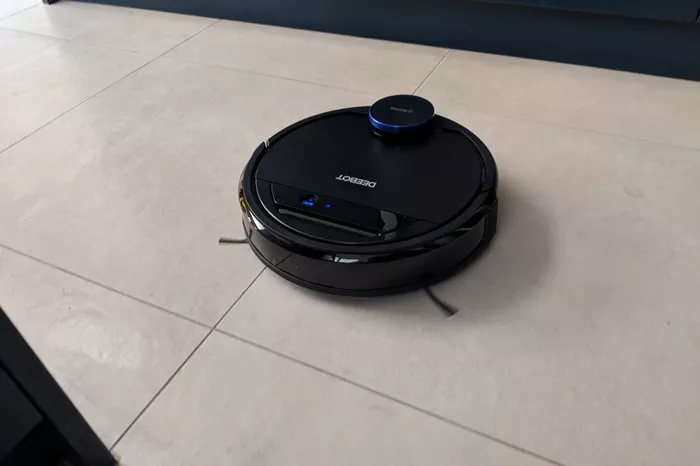Robot vacuums have surged in popularity over recent years, becoming a common household item. These automated devices promise to save time and effort by handling the mundane task of floor cleaning. With their sleek designs and advanced technology, robot vacuums offer an appealing solution for maintaining clean floors with minimal human intervention. However, despite their many advantages, robot vacuums have notable limitations compared to traditional vacuum cleaners. This article delves into the drawbacks of robot vacuums, providing a comprehensive understanding of where they fall short.
Limitations in Cleaning Performance
Inefficient Navigation
One of the primary concerns with robot vacuums is their navigation efficiency. While these devices are equipped with sensors and algorithms designed to navigate a room, they are not always adept at avoiding obstacles or navigating complex spaces.
Robot vacuums frequently get stuck under furniture or tangled in wires. Despite advancements in technology, these devices can struggle to detect and maneuver around low-clearance furniture. This often leads to situations where the vacuum becomes immobilized, requiring manual intervention to free it. Additionally, cords and wires can pose significant challenges, as robot vacuums can easily become entangled, halting their progress and sometimes causing damage to both the wires and the vacuum itself.
The potential for missing spots is another navigation-related drawback. Robot vacuums rely on their sensors to map out and clean a room. However, their obstacle avoidance capabilities are limited. This limitation means that they can miss areas, especially those that are cluttered or have numerous obstacles. Consequently, users might find that certain spots are consistently less clean, necessitating manual touch-ups.
See also: The Perfect Vacuum for Your Car: Keep Cleanliness with Precision
Cleaning Power
Another significant limitation of robot vacuums is their cleaning power. Generally, robot vacuums offer weaker suction compared to traditional vacuum cleaners. While they can handle surface dirt and debris effectively, they often struggle with more demanding tasks.
Deep cleaning carpets is a particular challenge for robot vacuums. Traditional vacuums typically have powerful motors and rotating brushes that can agitate and remove dirt from deep within carpet fibers. In contrast, the smaller, less powerful motors in robot vacuums make it difficult for them to achieve the same level of deep cleaning. This limitation is especially noticeable in households with high-pile carpets or rugs.
Pet hair can also be a problematic area for robot vacuums. While some models are specifically designed to handle pet hair, they often do not perform as well as traditional vacuums equipped with specialized pet hair attachments. The weaker suction and smaller dustbin capacity can result in frequent clogs and the need for more regular maintenance.
Multi-Floor Cleaning Challenges
Robot vacuums are typically designed to clean a single level of a home. One of their significant limitations is their inability to navigate stairs. Unlike traditional vacuums, which can be easily carried from one floor to another, robot vacuums are confined to the level they are placed on. This restriction means that homeowners with multi-story homes need to either invest in multiple units or manually move the robot vacuum between floors, which diminishes the convenience factor.
Additionally, the process of moving a robot vacuum between floors can be cumbersome. Each time the vacuum is relocated, it often needs to remap the new area, which can take time and may not always result in an efficient cleaning pattern. This can be frustrating for users who expect a seamless, automated cleaning experience.
Other Considerations
Maintenance Needs
Robot vacuums, while designed to reduce the workload associated with floor cleaning, still require regular maintenance to function optimally. Cleaning brushes and sensors is a crucial part of this upkeep. The brushes, which help to agitate and lift dirt, can become tangled with hair and debris, reducing their effectiveness. Regular cleaning of these brushes is necessary to maintain performance.
Sensors, which guide the vacuum and help it avoid obstacles, also require regular maintenance. Dust and dirt can accumulate on these sensors, impairing their ability to detect obstacles accurately. Regular cleaning of the sensors ensures that the vacuum can navigate effectively and avoid getting stuck.
Battery replacement is another maintenance consideration. Over time, the rechargeable batteries that power robot vacuums lose their capacity to hold a charge. Replacing these batteries can be costly and is an additional expense that users need to factor into the overall cost of ownership.
See also: How Does a Wet Dry Vacuum Work: A Quick Guide
Limited Upfront Costs vs. Potential Repair Costs
The initial purchase price of a robot vacuum is generally higher than that of a traditional vacuum cleaner. This higher upfront cost can be a barrier for some consumers. However, the potential for complex and expensive repairs is another financial consideration.
Robot vacuums are sophisticated devices with many electronic components. When something goes wrong, repairs can be complicated and costly. Unlike traditional vacuums, which often have simpler designs and can be repaired with basic tools, robot vacuums may require professional servicing. This can add to the overall cost of ownership and is something potential buyers need to consider.
Conclusion
Robot vacuums offer significant convenience by automating the task of floor cleaning. They save time and effort, making them an attractive option for busy households. However, their limitations in cleaning performance, navigation efficiency, and maintenance requirements cannot be overlooked. Robot vacuums generally have weaker suction power, struggle with deep cleaning carpets and pet hair, and face challenges with multi-floor cleaning. Additionally, they require regular maintenance, and the cost of repairs can be high.
For these reasons, robot vacuums are best suited for specific situations. They are ideal for homes with minimal clutter and primarily hard flooring. For households with pets, high-pile carpets, or multiple floors, traditional vacuums may still be the better option. While robot vacuums are a valuable tool for maintaining cleanliness, they are not yet a complete replacement for the power and versatility of traditional vacuum cleaners.

